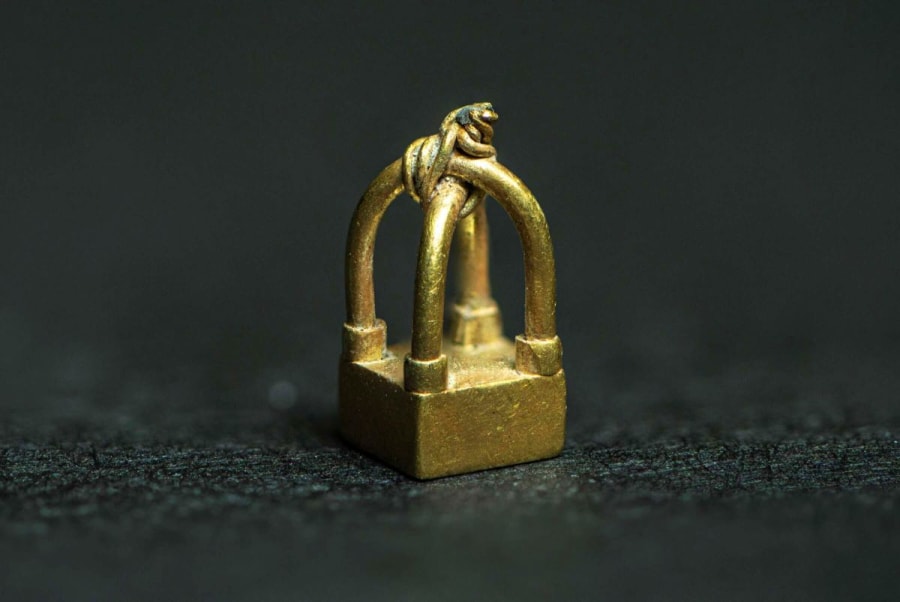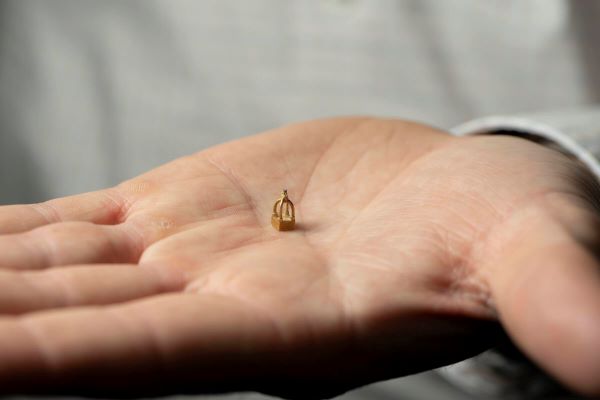Rare Phoenician electrum earring pendant from King Solomon's time discovered in Jerusalem

A decade-long mystery surrounding a captivating archaeological find has finally been solved. The revelation of a 3,000-year-old Phoenician earring pendant, crafted from a precious gold-silver alloy known as electrum, has stirred excitement among scholars and historians alike.
This extraordinary piece of jewelry, discovered during excavations in the Ophel area in Jerusalem, was officially presented to the public at the opening of the "King David and Solomon Discovered" exhibit.
This world premiere initiative, organized by the Armstrong Institute of Biblical Archaeology (AIBA), will be held from Feb. 25 until Jan. 31, 2025, and serves as a tribute to the late Israeli archaeologist Dr. Eilat Mazar.
In the annals of history, the Bible recounts a period of close collaboration between Israel and the Phoenicians, particularly during the reigns of King David and his successor, King Solomon. Scriptures, such as 1 Kings 5:1, portray the Phoenician King Hiram's admiration and support for King Solomon, symbolizing the alliance between the two kingdoms.
The biblical narrative paints a picture of mutual assistance and partnership, with the Phoenicians contributing resources and expertise to monumental construction projects in Jerusalem.
The significance of the Phoenician earring pendant lies not only in its exquisite craftsmanship but also in its archaeological context. Unearthed amid the ancient ruins of Jerusalem's Ophel area – between the city of David and the king's palace to the south and the Temple Mount to the north – the pendant offers tangible evidence of a Phoenician presence in the middle of the city during the 10th century B.C. (Iron Age II).
This discovery adds a new dimension to our understanding of Jerusalem's historical landscape, revealing the intricate web of cultural interactions and trade networks that characterized the ancient Levant in the 10th century B.C., and again proving the biblical account as being filled with historical accuracy.
The excavations at the Ophel have repeatedly proven how the Bible, with its references to a powerful kingdom under Solomon in the 10th century B.C. and the Kingdom of Judah that prospered after him, was correct.
The archaeologist Eilat Mazar made many discoveries corroborating this, notably the famous so-called "Solomon's Gate" dating from this period, inscriptions mentioning royal administrators, as well as inscriptions of seals that mentioned King Hezekiah and the Prophet Isaiah.
In 2012, an inscription written in ancient Sabaean was also discovered, underscoring the deep trade and cultural connections that flourished between Israel during the reign of King Solomon and the Kingdom of Sheba.
The journey to uncovering the pendant's secrets was not without its challenges. Excavations led by Dr. Eilat Mazar, spanning from 2009 to 2018, employed innovative techniques, such as wet sifting to meticulously sift through soil layers and unearth tiny artifacts. It was through these painstaking efforts that the pendant, smaller than a modern dime with just 4mm square at the base, was eventually discovered.

Its unique design and composition, confirmed to be electrum through metallurgical analysis, attest to the advanced craftsmanship of ancient artisans. According to Brent Nagtegaal of the Armstrong Institute, it is the earliest gold or electrum artifact ever discovered in an archaeological excavation in Jerusalem.
Expert opinions, including those of renowned archaeologist Dr. Amir Golani, corroborate the Phoenician origin of the pendant. Despite slight differences from later Phoenician artifacts, such as the absence of metallic granules, the pendant's design and construction align with Phoenician stylistic conventions.
This reinforces the notion of a Phoenician presence in Jerusalem during the Iron Age, as is mentioned in the Bible, shedding light on the city's cosmopolitan character and its role as a hub of intercultural exchange.
The new exhibit in Edmond, Oklahoma will remind visitors of the rich tapestry of history woven into the fabric of Jerusalem.
From the splendor of King Solomon's reign to the presence of Phoenician representatives and their rich skilled workers in Jerusalem during the 10th century B.C., each artifact tells a story of human endeavor and cultural exchange, and can many times prove the accuracy of the biblical narrative.

The All Israel News Staff is a team of journalists in Israel.













